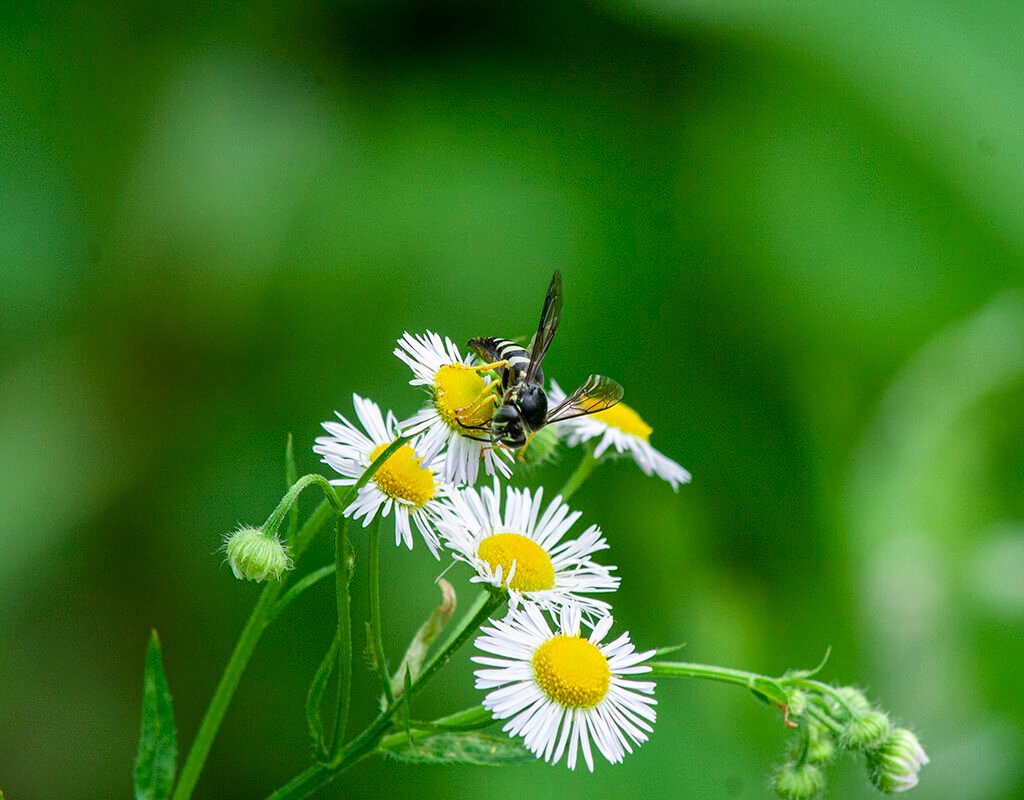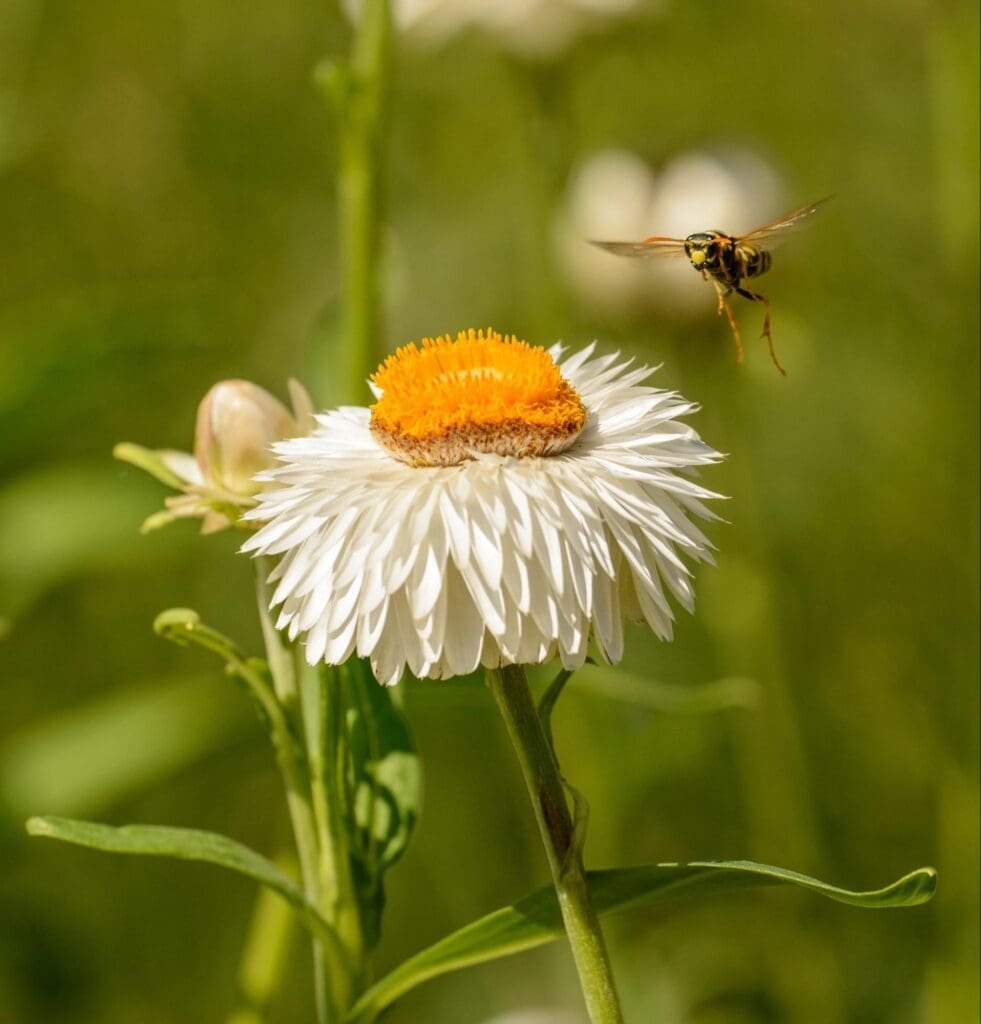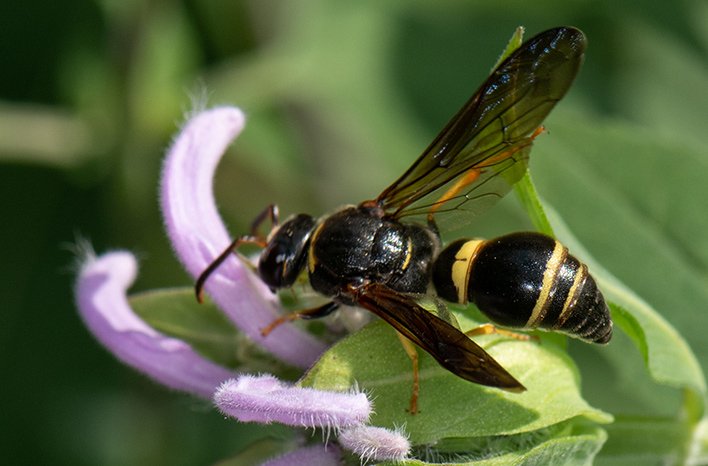Late summer should be the time to enjoy your garden’s final blooms, harvest fresh vegetables, and relax outdoors. But just as you settle in with a cold drink, a familiar buzz interrupts the peace: wasps. By August and September, these striped insects seem to appear everywhere—hovering around food, buzzing near flowers, and swarming your garden.
But why does this happen? Why do wasps seem more aggressive and abundant in late summer compared to spring or early summer? Understanding their life cycle, behavior, and food sources provides the answers. In this article, we’ll explore why wasps swarm your garden in late summer, the role they play in nature, and safe ways to manage their presence without harming the ecosystem.
Understanding the Wasp Life Cycle

The key to understanding wasp behavior in late summer lies in their annual life cycle. Unlike honeybees, which live in perennial colonies, most wasps—especially yellowjackets and paper wasps—follow a seasonal pattern:
- Spring (Colony Foundation):
- A fertilized queen emerges from winter hibernation.
- She starts building a small nest and lays eggs.
- Workers (sterile female wasps) hatch and take over nest duties.
- Early to Mid-Summer (Colony Expansion):
- The colony grows rapidly, with hundreds (sometimes thousands) of workers.
- Workers feed larvae with protein sources like caterpillars, flies, and other insects.
- In return, larvae secrete a sugary substance that nourishes the workers.
- Late Summer (Shift in Diet & Behavior):
- The queen stops laying eggs, and larvae production slows.
- Workers lose their source of sugary larval secretions.
- Starving for sugar, they begin foraging aggressively for nectar, ripe fruits, and human food.
This shift in diet explains why wasps suddenly become more noticeable and bothersome in gardens, picnics, and outdoor spaces during late summer.
Why Wasps Swarm in Late Summer

Now that we understand their cycle, let’s break down the main reasons why wasps invade your garden toward the end of the season.
1. Searching for Sugar
Without larvae to feed them sugar, worker wasps look for alternative sources. Gardens full of ripe fruit, nectar-rich flowers, and sugary drinks become prime targets. That’s why you often find wasps around apple trees, berry bushes, and soda cans.
2. Increased Numbers
By late summer, wasp colonies reach their peak population—sometimes up to 5,000 individuals. With so many workers foraging, your chances of encountering them increase dramatically.
3. Attraction to Ripe Fruit and Vegetables
If your garden includes fruit trees, grapevines, or vegetable plants like corn and tomatoes, expect wasps. Overripe or damaged produce leaks sugars that attract them in swarms.
4. Protein Sources Still Matter
Though sugar is their main craving, wasps still need protein to prepare new queens and males for winter. This makes your garden’s insect population—caterpillars, flies, and aphids—an additional draw.
5. Aggressive Behavior
Late in the season, with no larvae to care for and their colony’s end approaching, wasps become more defensive and unpredictable. This is why they sting more readily in late summer than earlier in the year.
The Role of Wasps in Your Garden

Before rushing to destroy wasps, it’s important to remember that they are not just “pests”—they play crucial roles in your garden ecosystem.
- Natural Pest Control:
- Wasps prey on caterpillars, beetle larvae, flies, and aphids.
- This keeps harmful insect populations under control, reducing your need for pesticides.
- Pollination:
- While not as efficient as bees, wasps do pollinate when feeding on nectar.
- They help fertilize late-blooming flowers and crops.
- Biodiversity Balance:
- Wasps provide food for birds, spiders, and other predators.
- Eliminating them completely would disrupt the ecological chain.
So while wasps can be a nuisance, they’re also unsung heroes of natural pest management.
How to Manage Wasps in Your Garden

You don’t have to choose between a wasp-free yard and protecting biodiversity. Instead, focus on management strategies that minimize human-wasp conflict.
1. Reduce Attractants
- Harvest fruit promptly: Don’t let fruit rot on trees or fall to the ground.
- Secure compost bins: Wasps are drawn to food scraps.
- Cover drinks and food: Especially during outdoor meals.
- Use tightly sealed garbage cans: Prevents wasps from scavenging.
2. Plant Smart
Some plants naturally deter wasps with their scent. Consider adding:
- Wormwood (Artemisia absinthium)
- Eucalyptus
- Citronella grass
These can help redirect wasps away from seating areas.
3. Offer Decoys
Set up alternative food sources away from high-traffic areas:
- Place a plate of overripe fruit far from patios or seating areas.
- This distracts wasps and keeps them busy elsewhere.
4. Manage Nests Carefully
- Locate nests early in summer when they’re small and easier to handle.
- Avoid destroying nests in late summer—this can provoke aggression.
- For nests near doorways or high-traffic areas, call a professional for safe removal.
5. Use Wasp Traps (with Caution)
DIY traps made with sugar water or vinegar attract wasps, but they also kill them. Use traps sparingly, as eliminating too many wasps can upset garden balance.
Safety Tips for Living with Wasps

Since wasps are inevitable in late summer, it’s best to learn how to coexist safely:
- Stay calm: Swatting increases the chance of stings.
- Wear light-colored clothing: Wasps are drawn to dark colors and floral prints.
- Avoid strong perfumes: Scents may attract them.
- Keep kids and pets away from nests: Teach children not to disturb wasps.
When to Seek Professional Help
Most wasp activity can be managed with simple precautions, but you should consider professional pest control if:
- A nest is located near an entrance, porch, or children’s play area.
- You or a family member has a severe allergy to wasp stings.
- The nest is very large (thousands of wasps).
Final Thoughts
Wasps swarming your garden in late summer is not random—it’s the result of their life cycle, colony growth, and changing food needs. As their sugar cravings peak and populations surge, they become more visible and sometimes aggressive.
While their presence may feel overwhelming, remember that wasps are also beneficial: they control pests, pollinate plants, and support biodiversity. With a few smart practices—like managing food sources, planting deterrents, and coexisting respectfully—you can reduce conflict and enjoy your garden without fear.
Late summer is, after all, the final stage of the wasps’ season. By early fall, most colonies die off, leaving only queens to overwinter. So instead of seeing wasps as invaders, think of them as seasonal visitors—an essential, if sometimes annoying, part of nature’s rhythm.

Leave A Comment